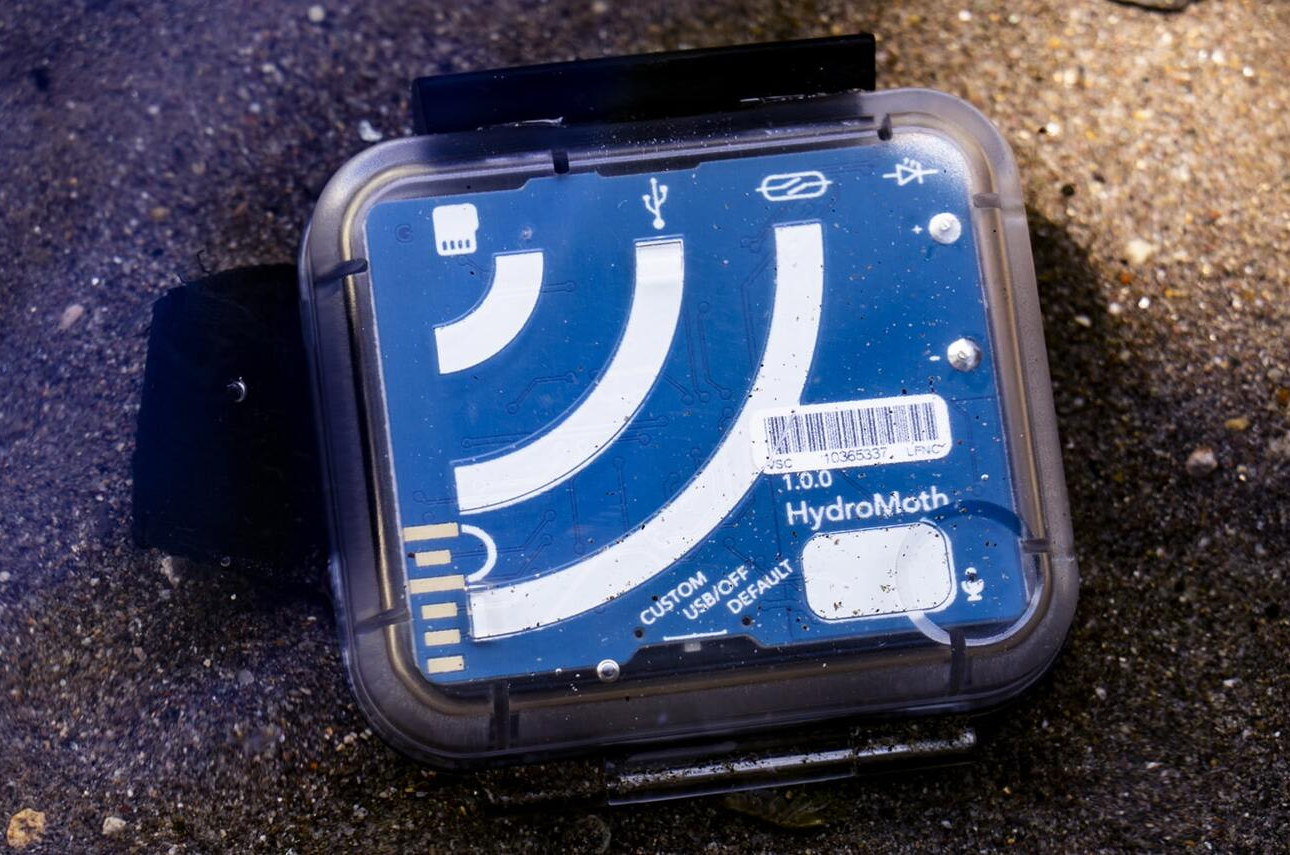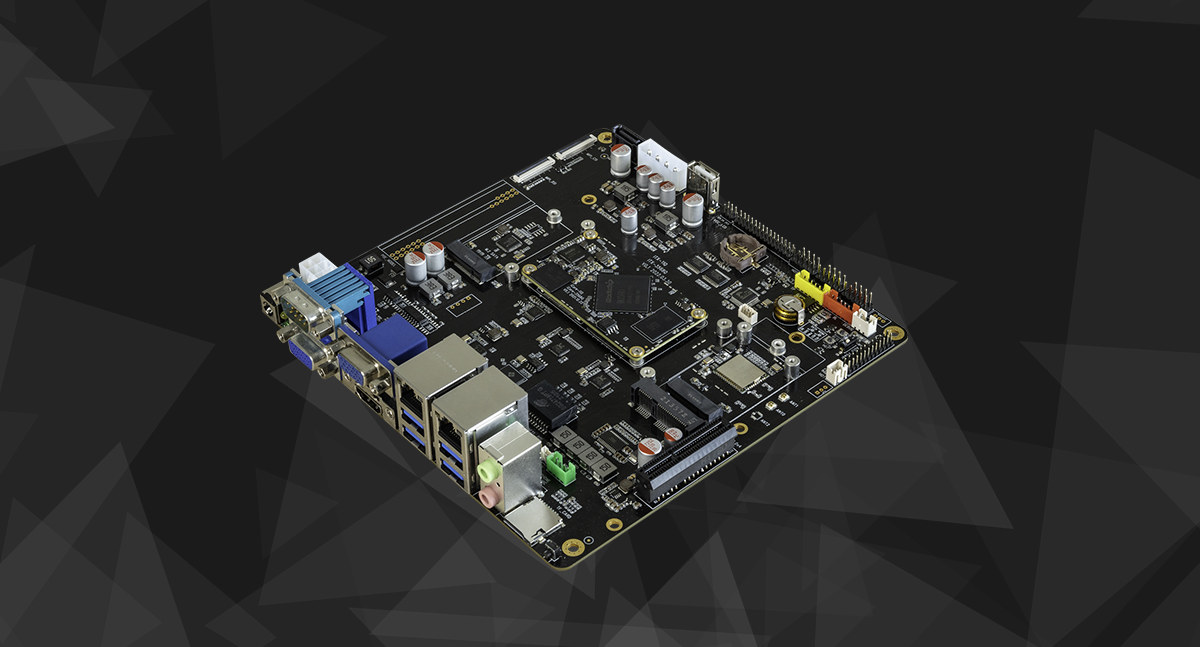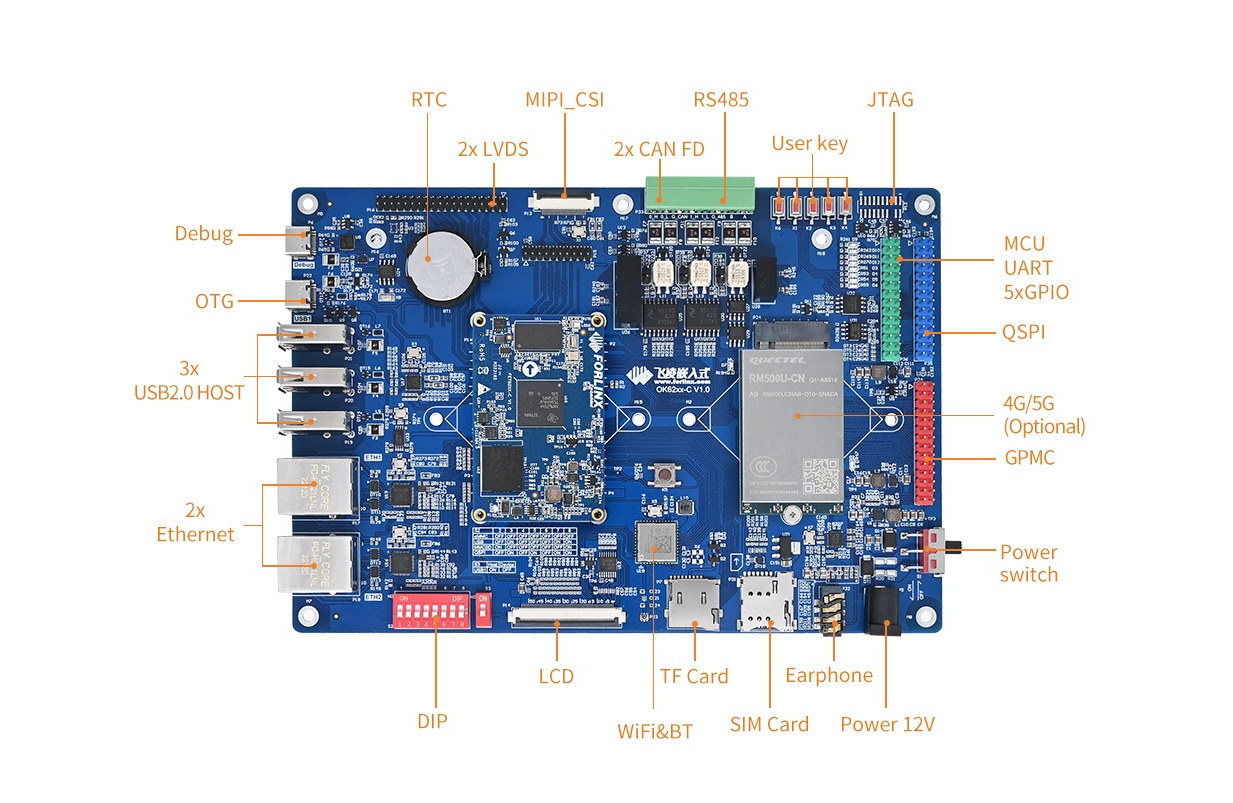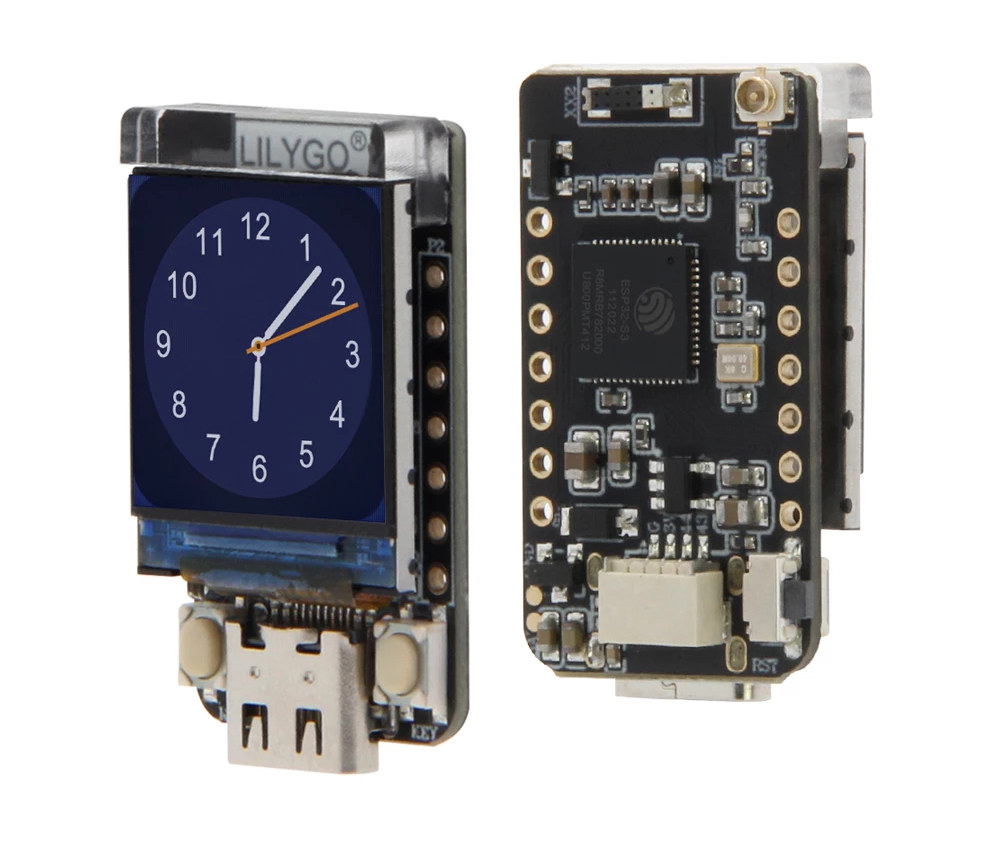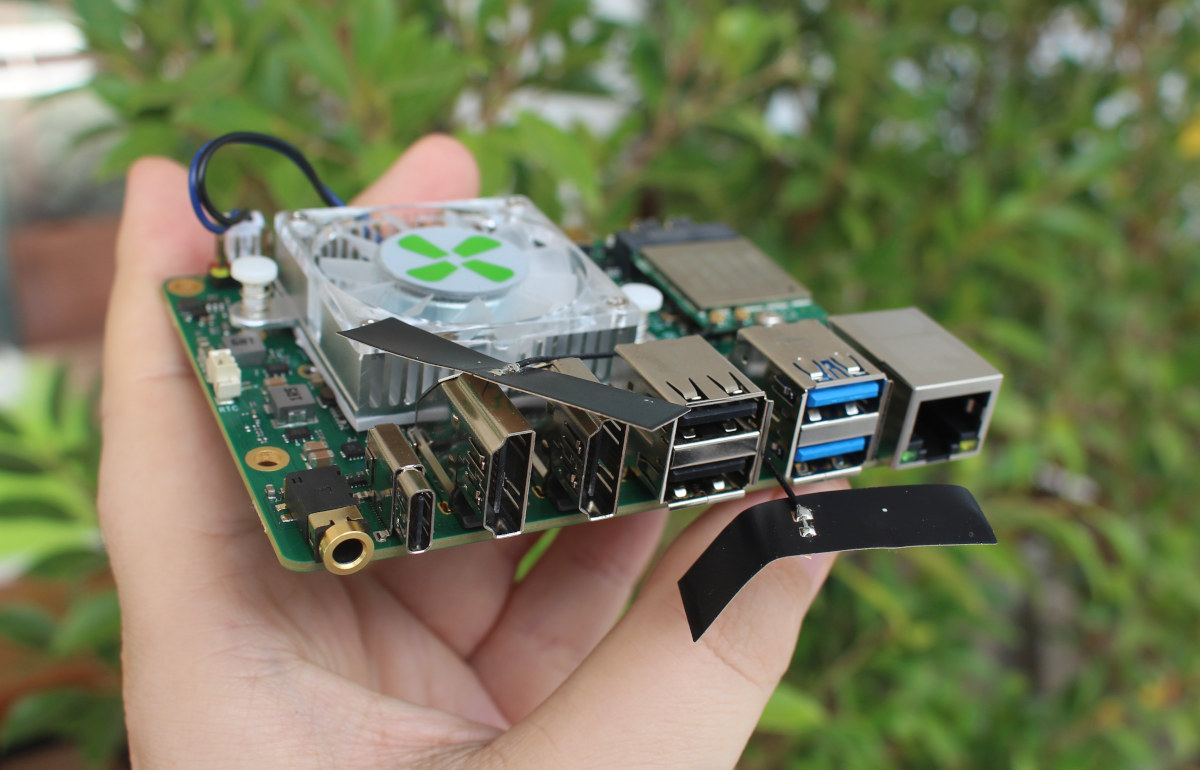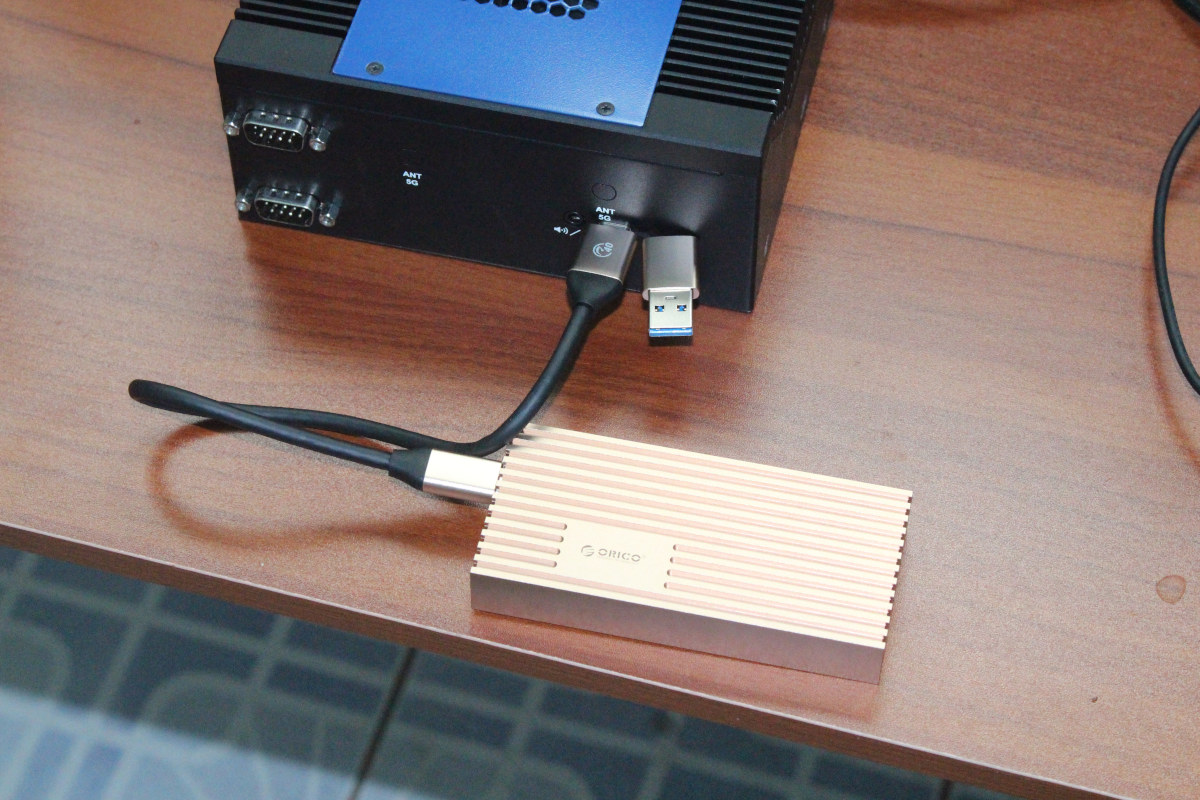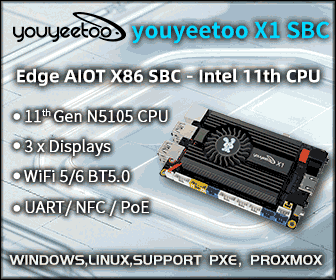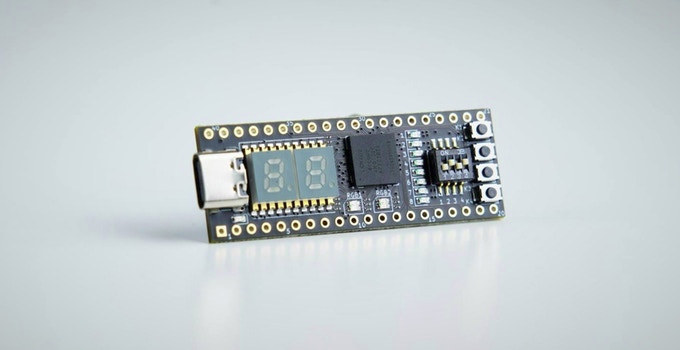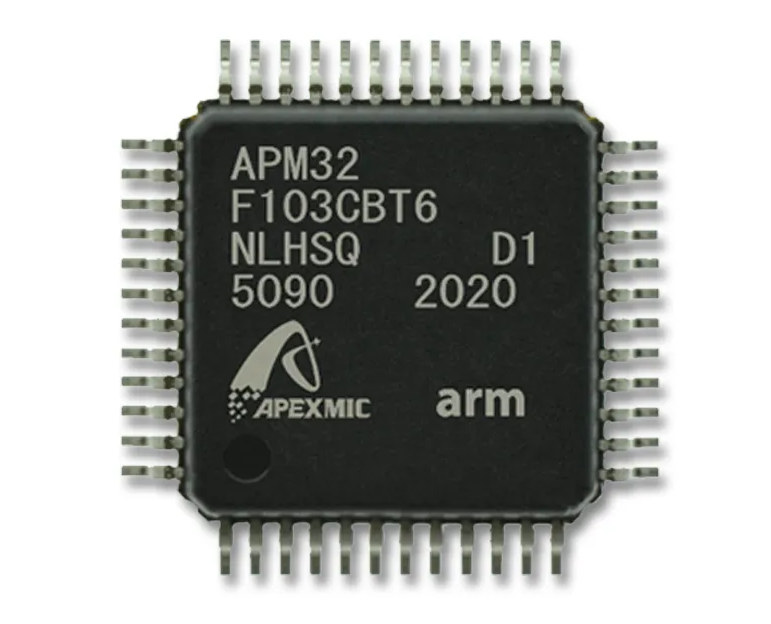Open Acoustic Devices’ HydroMoth is the underwater equivalent of the AudioMoth full-spectrum acoustic device that records audio samples mostly to monitor wildlife. Still based on a Silicon Labs EFM32 Wonder Gecko MCU, the HydroMoth is firmware-compatible with AudioMoth, enables audio recording at up to 60 meters deep, and has been tested to last two months at a depth of 30m using three AA batteries. HydroMoth key features and specifications: Wireless microcontroller – Silicon Labs EFM32 Wonder Gecko Cortex-M4F MCU @ 48MHz with 256kB Flash, 32kB RAM Storage – MicroSD card slot to store audio data Audio capture Onboard analog MEMS microphone acting as contact hydrophone Analog preamplifier with adjustable gain Uncompressed WAV from 8k to 384k samples per second USB – Micro USB Type-B port for configuration and reprogramming of the flash Misc Onboard RTC to track time in UTC timezone Improved 32.768 kHz MEMS oscillator to reduce clock drift […]
Firefly ITX-3568JQ – A Mini-ITX motherboard with Rockchip RK3568 CPU
Firefly ITX3588J mini-ITX motherboard with Rockchip RK3588 SoC now has a little sister/brother based on Rockchip RK3568 quad-core Cortex-A55 processor called ITX-3568JQ, and designed to power Arm PCs, cloud terminals, industrial controllers, edge computers, advanced NVR, NAS devices, and more. The motherboard supports up to 8GB RAM, 128GB eMMC flash, offers SATA storage, dual Gigabit Ethernet, WiFi 6, optional 4G or 5G cellular connectivity, can handle up to three independent displays, and offers plenty of I/O options including an RS232/RS485 DB9 connector and a PCIe slot. Firefly ITX-3568JQ specifications: SoC – Rockchip RK3568J quad-core Arm Cortex-A55 processor @ up to 2.0 GHz with Arm Mali-G52-2EE GPU with support for OpenGL ES 3.2, OpenCL 2.0, Vulkan 1.1, 1.0 TOPS NPU, 8MP ISP, 4Kp60 video decoding, 1080p60 H.265/H.264 video encoding System Memory – 1GB, 2GB, 4GB, or 8GB LPDDR4 Storage 8GB, 16GB, 32GB, 64GB, or 128GB eMMC flash 16MB SPI flash 1x […]
Texas Instruments AM6254 powered industrial SBC features dual GbE, CAN Bus, RS485, optional 4G/5G cellular networking
Texas Instruments Sitara AM623 and AM625 Arm Cortex-A53 AIoT processors were just introduced last month, but Forlinx has already introduced the OK6254-C SBC powered by the Sitara AM6254 quad-core processor with up to 2GB DDR4, and an 8GB eMMC flash. The board features two Gigabit Ethernet ports, CAN FD and RS485 interfaces, plus plenty of I/O headers, support for up to three displays via LVDS and parallel RGB interfaces, as well as optional support for 4G/5G cellular connectivity that makes it suitable for all sorts of industrial applications. Forlinx OK6254-C specifications: FET625x-C SoM SoC – Texas Instruments AM6254 quad-core Cortex-A53 processor @ 1.4GHz with Cortex-M4F real-time core @ 400 MHz, Imagination AXE1-16M GPU @ 500MHz with OpenGL 3.x/2.0/1.1 + Extensions, and Vulkan 1.2 support; Single (AM6251) and dual-core (AM6252) modules are also available System Memory – 1GB (default) or 2GB DDR4-1600 Storage – 8GB eMMC flash 4x 80-pin board-to-board […]
LILYGO T-QT V1.1 – A cute little board with ESP32-S3 and a 0.85-inch color display
LILYGO must be churning out at least one new “ESP32” board every month, but I don’t think they’ve ever made one with ESP32-S3. LILYGO T-QT V1.1 board changes that and combines the dual-core WiFi 4 and Bluetooth LE 5.0 AI microcontroller with a 0.85-inch color display. The board also happens to be rather small and cute with a 33 x 18 mm form factor, offers some I/O via headers and a 4-pin connector, and can be powered via its USB Type-C port or a battery, but lacks a charging circuit. LILYGO T-QT V1.1 specifications: Wireless MCU – Espressif Systems ESP32-S3 dual-core Tensilica LX7 @ up to 240 MHz with vector instructions for AI acceleration, 512KB RAM, wireless connectivity Storage – 8MB flash Connectivity via ESP32-S3 2.4 GHz 802.11 b/g/n Wi-Fi 4 with 40 MHz bandwidth support Bluetooth Low Energy (BLE) 5.0 connectivity with long-range support, up to 2Mbps data rate. […]
ROCK 5B developer edition preview – Part 1: Unboxing and first boot to Debian 11
Radxa ROCK5 Model B (aka ROCK 5B) is one of the most anticipated Rockchip RK3588 single board computers due to its features set and relatively affordable price. It was first showcased in January, but it’s taking a while as the Cortex-A76/A55 SoC is a complex beast. The good news is that the public launch is getting closer as Radxa sent “developer edition” samples to developers and enthusiasts for a “debug party”. I was one of the recipients so, in this post, I’ll have a closer look at the latest revision of the board, and give it a quick try first before going into more details in the second of this preview. ROCK5 Model B unboxing I received the 16GB RAM version which should be the same for all board part of the “developer edition batch. Developers are invited to submit reports to Radxa forums, and since those are public, anybody […]
Mini review of ORICO “USB 4.0” M.2 NVMe SSD enclosure
ORICO has sent me a sample of a USB 4.0 M.2 NVMe SSD enclosure for review, which was timely as I did not have a fast USB storage option for testing. In this post, I’ll check out the hardware, show how to install an NVMe SSD, and test performance in UP Xtreme i11 mini PC since it happens to come with a USB4 port. ORICO USB 4.0 M.2 SSD enclosure specs and unboxing The exact model I received is the ORICO M234C3-U4 with a Rose Gold aluminum enclosure (107x50x17mm), supporting M.2 M-Key and B+M Key 2230, 2242, 2260, 2280 SSDs (more on that later), and offering up to 40 Gbps through its USB 4.0 port. The device ships with a USB Type-C to USB Type-C/Type-A cable, a thermal pad, a heatsink, two screws, and a multilingual user manual. There’s only one USB Type-C port one the device. M.2 NVMe SSD […]
STEPFPGA FPGA board is programmable with a Web IDE (Crowdfunding)
STEPFPGA MXO2Core miniature FPGA development board is based on Lattice MXO2-4000 FPGA, and designed for education with an easy-to-use Web IDE, instead of the more traditional tools that can be frustrating to use, and detailed tutorials. The board also comes with a 2-digit segment display, some LEDs, push buttons, and a 4-way DIP switch, as well as two rows of twenty pins for I/O expansion, and a USB Type-C port used for power, programming, or mass storage. STEPFPGA MXO2Core specifications: FPGA – Lattice Semi MachXO2 X02-4000 FPGA with 4320 LUTs Display – 2-digit segment display USB – 1x USB Type-C port for power, programming (UART), and mass storage Expansion – 2x 20-pin headers with up to 36x GPIOs, SPI, I2C, 3.3V, VBUS, GND; breadboard-compatible Misc – 2x RGB LEDs, 8x red LEDs, 4-way DIP switch, 4x push buttons Power Supply – 5V via a USB port Dimensions – Small four-layer […]
Geehy APM32F103 clone of STM32F103 MCU has been tested to work without PCB or code modifications
Geehy APM32F103 is a clone of STMicro STM32F103 MCU that has been tested by at least one person who claims it was just a drop-in replacement and PCB, code, hex, testing, and production did not have to be changed at all. Most STM32 microcontrollers are in short supply with 52+ weeks lead times and prices going through the roof, so people may be looking into the long list STM32 clones and fakes including APM32F103. They all claim to be pin-to-pin and firmware compatible, but when theory meets reality, things may go wrong. For instance, last year I had a conversation with one person who switched to GD32 microcontroller and had all sorts of issues (translated from French): I ordered samples from the GD32F103RCT6 (LQFP64) “clone”, tested them, and it’s a catastrophe… Out of 6 chips, I only managed to flash one. And that one will not boot either. I’ve dived […]


